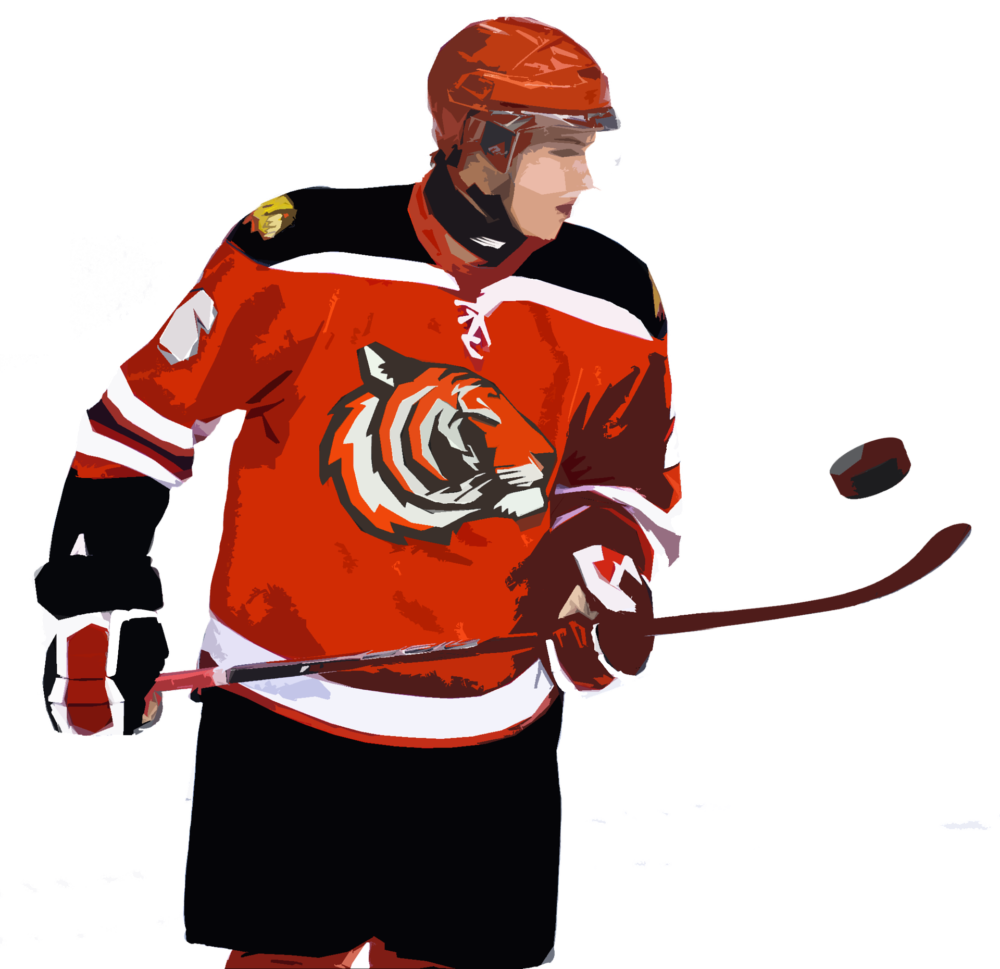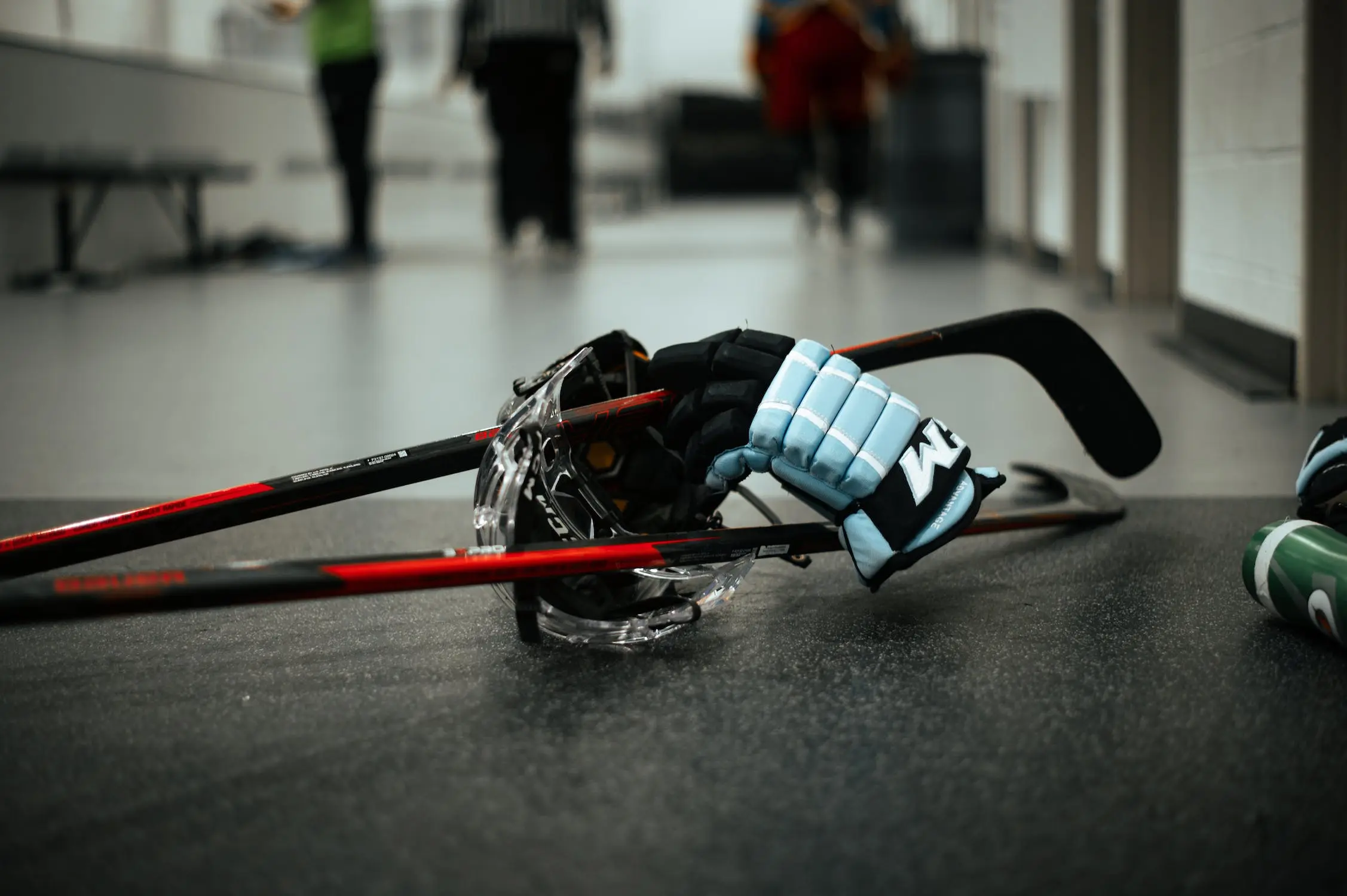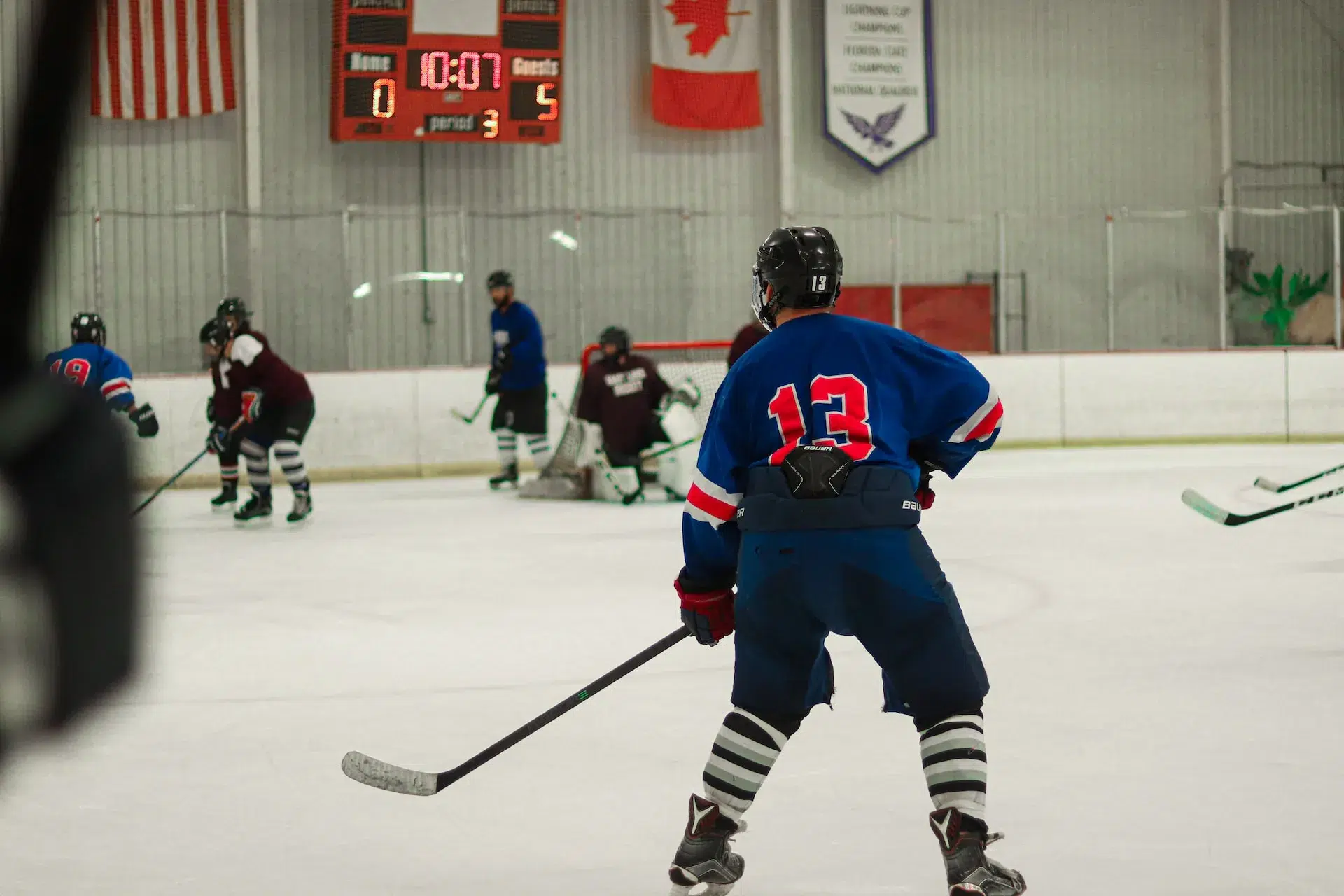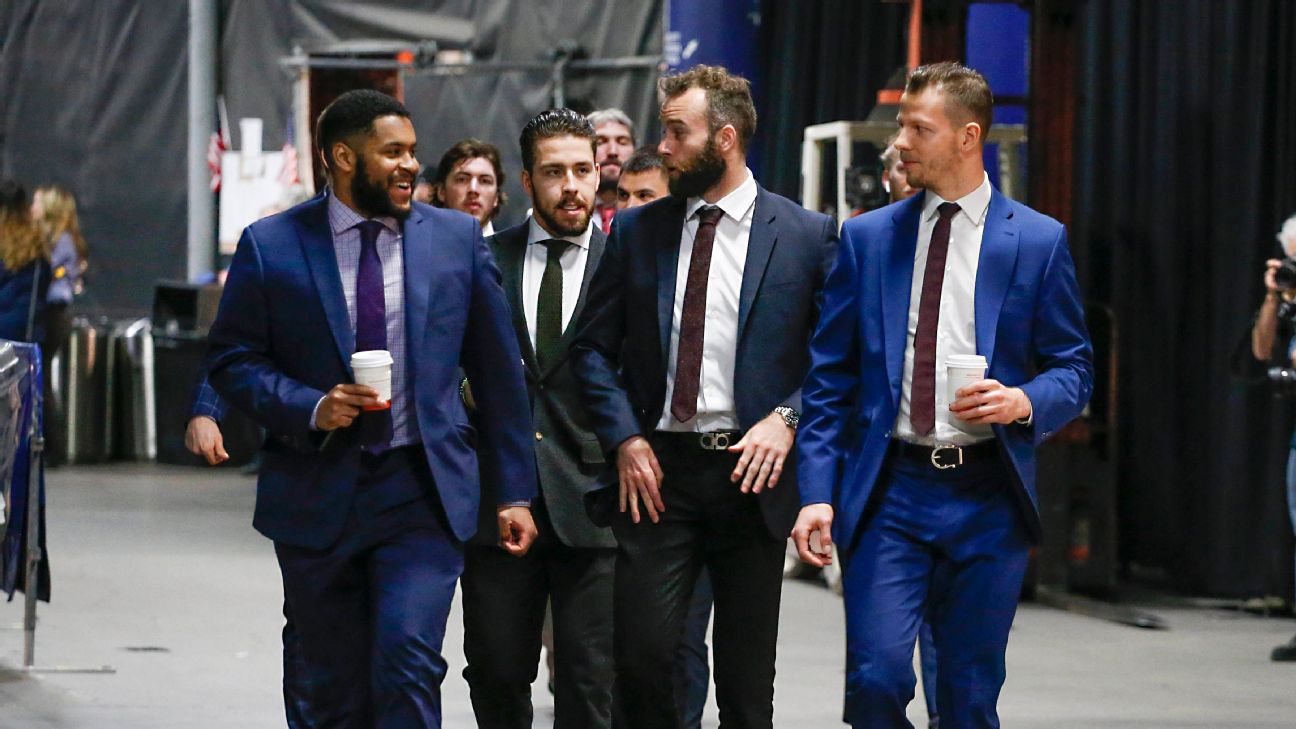As an avid ice hockey enthusiast, you’re no stranger to the exhilarating rush that accompanies each game. The rapid movement of the players, the sheer precision of every shot, and the collective gasp from the spectators as the puck hits the back of the net – it’s a spectacle like no other.
Passing, in ice hockey, is a skill that often goes underappreciated. However, it is the cornerstone of every successful team play, the precursor to every breathtaking goal, and the magic that can make or break a game. So let’s delve into the fascinating world of ice hockey passing.
To gain a comprehensive understanding of the various skills involved in ice hockey, including passing, feel free to explore our comprehensive guide on ice hockey skills.
The Fundamentals of Ice Hockey Passing
First things first, passing isn’t merely about flicking the puck from player A to player B. Oh no, it’s a science in itself, involving timing, precision, and a keen sense of spatial awareness.
A well-executed pass requires control, a precise release, and a carefully calculated follow-through. Neglecting these aspects would be like trying to drive a car without learning how to steer – and we all know how that would end!
Understanding basic techniques is vital to improving your passing skills. The right equipment, especially a well-selected hockey stick, plays a crucial role in successful passing. To learn more about choosing the right equipment, take a look at our guide on ice hockey equipment.
Stages of a Successful Hockey Pass
1. Control the Puck on the Stick Blade
Every great pass begins with the puck resting comfortably on your stick blade. Imagine you’re cradling a delicate egg, ensuring it’s secure but not applying too much pressure. The puck should rest in the middle of the blade for optimal control. It’s this finesse that sets the stage for an exceptional pass.
2. Puck Release
Now comes the moment of truth – the release. It’s not about brute force; it’s about letting the puck glide smoothly off your stick. To achieve this, maintain a slight downward pressure on the stick, lean into the pass, and let the puck slide off the blade. Remember, it’s all in the wrist action!
3. Follow-through for Accuracy and Power
The follow-through is the grand finale of your passing sequence. It’s what gives your pass the necessary direction and power. Extend your stick in the direction you want the puck to go. Imagine you’re pointing the way for the puck, guiding it toward its intended target.
Good posture and balance, achieved through solid skating skills, are fundamental to effective passing. Check out our ice hockey skating drills for exercises that can help improve your balance on the ice.
Improving Your Ice Hockey Passing Skills: Expert Techniques and Drills
Now that we’ve laid the foundation, it’s time to start constructing your ice hockey passing prowess. After all, Rome wasn’t built in a day, and neither is a solid passing technique.
-
Enhancing Ice Awareness
1. Understanding the Importance of Ice Awareness
Ice awareness, in simple terms, is your ability to perceive and interpret what’s happening around you on the ice. It’s like a sixth sense that allows you to read the game, predict plays, and most importantly, make smart passes. Without ice awareness, even the most skillful players can end up feeling lost amidst the hustle and bustle of the game.
2. Techniques to Improve Ice Awareness
Improving ice awareness requires time, but a few strategies can expedite the process. Start by keeping your head up, scanning the ice regularly, and tracking both your teammates and opponents. You also need to build a mental map of the game and anticipate the movement of the puck. Remember, a great player isn’t just reactive; they’re proactive.
3. Drills for Building Ice Awareness
A fantastic drill to enhance ice awareness is the “Mirror Drill.” Here, one player leads with the puck, and the other follows, mirroring their movements. This drill encourages players to stay alert, scan the ice, and anticipate their partner’s actions.
-
Accuracy: The Key to Effective Passing
1. Significance of Accuracy in Passing
Imagine setting up the perfect play, only for it to fall apart because of a misguided pass. Frustrating, right? That’s why accuracy is paramount. A precise pass can slip through the tightest of defenses, turning a potential deadlock into a goal-scoring opportunity.
2. Expert Tips to Enhance Passing Accuracy
First, focus on the fundamentals. Your grip, puck control, release, and follow-through all contribute to the accuracy of your pass. Secondly, visualize your pass. Like a golfer envisioning their swing, picture the puck’s path from your stick to your teammate’s. Lastly, practice. The more passes you make, the better your accuracy will become.
3. Drills for Improving Passing Accuracy
One excellent drill is the “Passing Targets” drill. Set up a few targets (like cones or training aids) around the ice and aim your passes at them. This exercise helps you to work on both the power and precision of your passes.
Just as with shooting, accuracy is crucial in passing. The principles that apply to accurate shooting can also be beneficial when passing. Learn more about these principles in our guide on hockey shooting.
-
The Role of Consistent Practice
1. Why Practice Matters
Simply put, practice makes perfect. The more you work on your passing, the more it becomes second nature. With enough practice, you’ll be able to deliver accurate passes without even thinking about it – a skill that can prove invaluable in high-pressure situations.
2. Recommended Drills and Routines to Practice Passing Skills
A tried-and-true drill for practicing passing skills is the “Pass and Follow” drill. This drill involves passing the puck to a teammate and then following your pass to the receiving point, encouraging accurate and quick passes.
Consistent practice both on and off the ice is vital for improving passing skills. We have compiled a list of off-ice training drills that can help improve your wrist strength, flexibility, and accuracy.
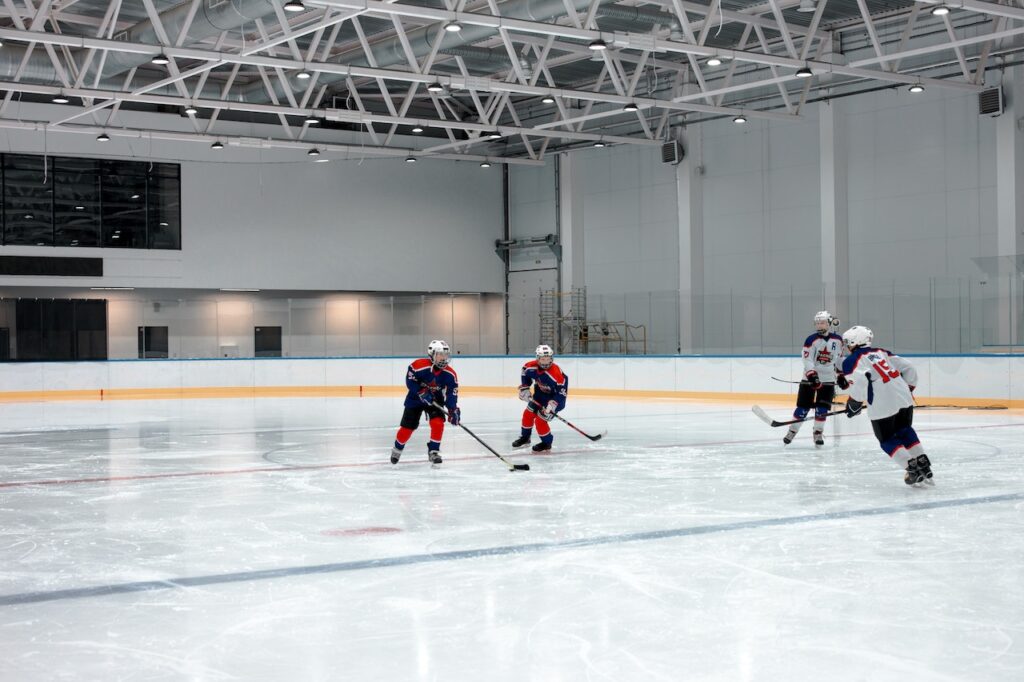
A Guide to Different Types of Ice Hockey Passes
Passing in ice hockey is a versatile skill. It’s like a painter’s palette, with a plethora of colors, or in this case, types of passes, to choose from. Each type of pass has its purpose, its unique flair, and when used correctly, can bring an extra dimension to your game. So let’s dive in and explore this colorful array of passing techniques:
-
Standard Passes
These are the bread and butter of any hockey player’s passing arsenal. You’ll use these regularly in games, so mastering them is crucial.
1. Cross-Ice Pass: This is a pass that travels across the width of the rink. It can be a game-changer, opening up the ice and catching the opposing team off guard.
2. Stretch Pass: This is a long pass intended to bypass multiple opponents and reach a teammate further up the ice. Timing is crucial to avoid an offside call.
3. Centering/Slot Pass: This pass is made from the wing into the “slot” area in front of the net, aiming to set up a scoring opportunity.
4. No-Look Pass: As the name suggests, this pass is made without looking toward the intended receiver, a clever trick to misdirect opponents.
-
Advanced Passes
These are more nuanced and require a bit more skill and understanding of the game.
1. Tic-Tac-Toe Pass: Named after the children’s game, this involves quick, successive passes between two or three players to confuse opponents and create scoring opportunities.
2. Suicide Pass: A somewhat risky pass that leads the receiver into potential contact with an opposing player. It’s called a “suicide pass” because it can leave your teammate vulnerable to a hard check.
3. Drop Pass: A pass made by leaving the puck behind for a trailing teammate. This is often used on hockey power plays or to shake off a close-defending opponent.
4. Backhand Pass: A pass made from the backhand side of the stick. It can be a bit trickier to execute but is a valuable tool when there’s no time to switch to a forehand pass.
-
Specialty Passes
These are the ones that make the highlight reels. They add an element of surprise and can bewilder opponents.
1. Back Pass: A pass made in the opposite direction to the way you’re looking or skating. It requires great ice awareness and communication with your teammates.
2. Blind Pass: This is a pass made without looking, typically using your peripheral vision and game sense to locate a teammate.
3. Saucer Pass: This pass lifts the puck off the ice, making it a ‘saucer’ or float through the air over opponents’ sticks and onto your teammate’s stick.
4. Give and Go: This classic move involves passing the puck and then moving quickly to open space for the return pass and potential scoring chance.
Before delving into the types of hockey passes, it’s essential to understand how a player’s position on the ice affects the type of pass used. Get a deeper insight into player positions in our guide on ice hockey positions.
elow is a table outlining different types of passes along with their descriptions, key techniques, and situational use. Understanding these pass variations can enhance your decision-making and overall passing skills.
| Type of Pass | Description | Key Techniques | Situational Use |
|---|---|---|---|
| Cross-Ice Pass | A pass that goes horizontally across the width of the ice surface | Proper weight transfer, accuracy | Breakout plays, changing the point of attack |
| Stretch Pass | A long pass that is intended to quickly advance the puck | Power and accuracy, reading the play | Breakaway opportunities, fast transitions |
| Centering/Slot Pass | A pass aimed towards the center of the offensive zone | Timing, accuracy | Setting up scoring chances, finding open teammates |
| No-Look Pass | A pass made without looking at the intended recipient | Peripheral vision, awareness | Surprise element, catching defenders off-guard |
| Tic-Tac-Toe Pass | A quick sequence of two or more passes to create scoring opportunities | Quick puck movement, communication | Generating one-timers, bypassing defenders |
| Suicide Pass | A risky pass into the middle of the ice, exposing the recipient to potential hits | Timing, communication, trust | Quick transitions, catching opponents off-guard |
| Drop Pass | A pass made by dropping the puck to a trailing teammate | Communication, timing, support | Maintaining offensive momentum, regrouping |
| Backhand Pass | A pass made using the backside of the stick blade | Proper hand positioning, wrist action | Quick releases, surprise element |
Additional Expert Tips and Drills for Enhancing Hockey Passing Skills
Expert Insights into Hockey Passing
Passing in ice hockey isn’t merely about pushing the puck from one point to another; it’s a strategic maneuver that can set the stage for game-changing moments. When passing, consider not only the accuracy and power but also the timing of your pass. Keeping your passes unpredictable can make it more challenging for the opposition to intercept and counter your plays.
Additional Passing Drills
To further polish your passing skills, additional drills like the “Give and Go” are invaluable. In this drill, players work on quick passing and immediate movement after releasing the puck, mimicking the fast-paced scenarios often encountered during a game.
Strategies for Effective Passing
Effective passing isn’t a one-size-fits-all approach. It requires you to consider the context of the game. The score, time left, your position on the ice, and the positioning of other players all influence what constitutes a “good” pass. Sometimes, advancing the puck isn’t as beneficial as a safer, more calculated pass.
For more advanced tips that can enhance your overall game, including passing skills, check out our expert ice hockey tips.
Mastering the Art of Receiving Hockey Passes
The Importance of Receiving Passes in Ice Hockey
Being adept at passing isn’t enough; you also need to be proficient at receiving passes. Mastering this skill can significantly improve your team’s ability to maintain possession, control the pace of the game, and create scoring opportunities.
Techniques for Proper Reception
When it comes to receiving a pass, positioning, and control are paramount. Your stick blade should be flat on the ice, providing a broad and stable surface for the puck to land. As the puck arrives, “cushion” it by slightly retracting your stick, which helps to absorb the puck’s momentum and ensure a smooth reception.
Drills to Improve Receiving Skills
Improving your receiving skills can be as simple as practicing with a teammate. A practical drill is the “Bumper Pass” exercise. This drill involves a player passing the puck to a third player via a second player, who acts as a ‘bumper’ or intermediary. This exercise not only improves your receiving skills but also enhances your ability to quickly redirect passes.
Summarizing Key Points
Passing is a vital aspect of ice hockey, one that demands respect, understanding, and plenty of practice. From realizing the importance of ice awareness to mastering the art of receiving passes, each element contributes significantly to your overall game performance and your ability to work effectively as part of a team.
Encouragement for Continuous Practice and Improvement
Improvement comes with time, practice, and perseverance. Every mistake is a lesson learned, and every practice session brings you one step closer to the player you aspire to be. So, lace up those skates, hit the ice, and embrace the remarkable journey of becoming a better ice hockey player. Remember, the joy of playing the game is in the journey, not just the destination.
If you’re new to ice hockey, we recommend reading our ice hockey 101 guide to get a general understanding of the game.
References

